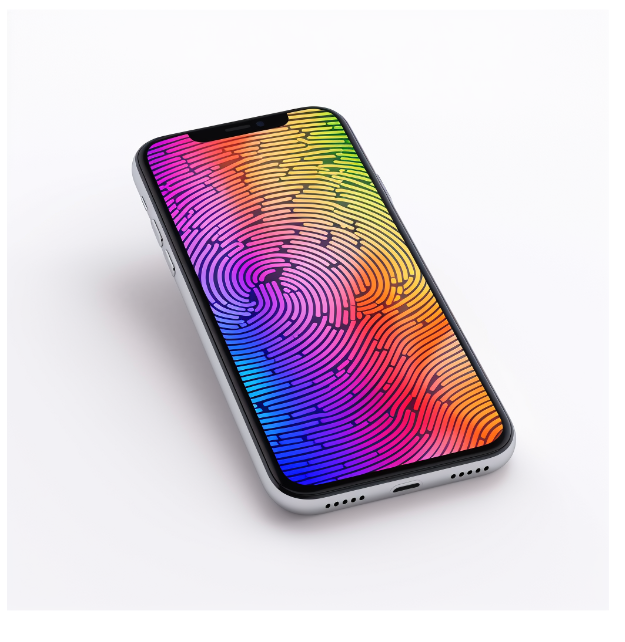- Home
- Mobile Fingerprinting Options for Faster Background
Mobile Fingerprinting Options for Faster Background

Fingerprinting. It’s a word that makes you think of darkened rooms, serious looking technicians, and big intimidating machines. But fingerprinting doesn’t have to be scary or difficult. New mobile fingerprinting options are changing the game and making background checks faster and easier than ever.
Old School Fingerprinting
Traditionally, fingerprinting for background checks meant ink, paper, and a whole lot of hassle. You’d get your fingers dirty with thick black ink that got everywhere. Then you’d try to neatly roll each finger on this little square card to capture your print. Smudges, smears, and fingerprints upside down were common. What a mess!
After that headache, you’d have to find an envelope and pay for postage to physically mail the cards off. Then play the waiting game, hoping the prints were legible enough when they arrived at the background check company. The whole process took time and was aggravating for everyone involved.
Enter Mobile Fingerprinting
Thankfully, those dark days are over! Mobile fingerprinting has revolutionized the way applicants submit fingerprints for background checks. Instead of ink and paper, mobile fingerprinting uses smartphones and electronic scanning.
With mobile fingerprinting, applicants can submit their prints electronically from anywhere. No more wasted trips to fingerprint offices or scheduling fingerprint appointments. Just quick and easy fingerprinting using your smartphone or tablet.
Employers benefit too. Mobile fingerprinting speeds up the entire background check process. Digital prints are available immediately, unlike mailed cards which take 3-5 days. That means hiring managers get background check results faster when they need to make time-sensitive hiring decisions.
Plus, mobile fingerprinting saves companies money. No more paying for ink cards, envelopes, postage, or document scanners. Those costs add up, especially for big companies hiring lots of people. Mobile apps provide fingerprinting for as low as $9.99 per month. And fingerprint scanners can be reused endlessly for thousands of applicants with no per-person fees.
It’s easy to see why more and more employers are switching to mobile fingerprinting. It’s convenient, fast, and cheaper. But how does it actually work?
Smartphone Camera Fingerprinting
One option for mobile fingerprinting uses the camera on the applicant’s smartphone or tablet. The device just needs to have a decent resolution camera. The applicant opens up the company’s fingerprinting app and follows the step-by-step instructions.
Using the guides in the app, the applicant puts their finger down on the screen one by one. They line up their prints in the on-screen box and snap a photo with the camera. The app converts the photos to digital fingerprint images compatible with FBI requirements. When all fingers are captured, the applicant hits submit.
Then with the tap of a button their fingerprint data is instantly sent off to the background check provider. No muss, no fuss! Within minutes the employer has the applicant’s prints on file and can start the background check right away.
Portable Fingerprint Scanners
Another mobile option uses small portable fingerprint scanners. These are pocket-sized devices that plug into a smartphone or tablet. They work similarly to the large live-scan fingerprint machines police departments use.
The scanners have a sensing window that reads the applicant’s fingerprint when pressed against it. Lights guides walk the applicant through scanning each finger. The detailed scans are way more accurate than smartphone pictures. The scans get converted to digital prints and off they go!
The portability of these devices lets employers take fingerprinting on the road. Recruiters can bring them to job fairs or testing events for on-site fingerprinting. And the scanners work anywhere, without requiring wifi or cell service.
Of course, the devices do require an upfront investment. But they can be used indefinitely without per-applicant costs. And employers get the benefit of a controlled, high-quality fingerprint capture experience.
Making Mobile Fingerprinting Work
Switching to a mobile fingerprinting system takes some prep work. Companies should plan ahead to make implementation smooth:
Pick the right solutions – Compare available apps and scanner devices. Pick options that integrate with your background check provider and fit your budget.
Train staff – HR and recruiters will need to learn the new procedures. Make sure they are comfortable onboarding applicants and troubleshooting any issues.
Set expectations – Being upfront with applicants avoids surprises. Explain the process and requirements so they know what to expect.
Following best practices ensures your mobile fingerprinting program will be set up for success.
The Next Generation of Fingerprinting
Mobile fingerprinting for background checks has existed for a few years now, but it still has room to grow. Some ways it could advance in the future include:
A national mobile fingerprint database, so prints could go to one place versus individual providers.
Tighter integration with law enforcement fingerprint databases for easier applicant look-ups.
More advanced biometrics like facial recognition or iris scanning alongside fingerprints.
Artificial intelligence that automatically checks quality and legitimacy of scans.
As the technology develops further, mobile fingerprinting will get even faster, more secure, and more user friendly. One day it may fully replace the old ink and paper method for good.
A Cleaner, Quicker Future
It’s an exciting time to be in the background screening business. Mobile fingerprinting completely transforms the experience for applicants and employers alike. No more dirty inky fingers or waiting around for snail mail cards. Just quick digital prints from the comfort of your couch.
From reduced costs to faster turnaround times, the benefits are clear. As mobile fingerprinting options improve, adoption will only increase. Though the process is still evolving, the future is bright and ink-free! It’s time to say goodbye to fingerprint frustration and hello to on-demand mobile convenience.
Author Bio
Wimgo
Other post in Categeory
© 2022 Wimgo, Inc. | All rights reserved.